Becoming a parent can be as frightening as it is wonderful, partly because it doesn’t come with a Haynes manual and partly because it probably means your fun car can no longer be your only car. You can’t really fit a rear-facing child seat in a Scion FR-S, but you don’t want to roll the dice on a used Porsche Macan or BMW X3. What do you do? Well, the 2026 Toyota RAV4 PHEV GR Sport promises what you crave.
The recipe is simple: Take the high-output 324-horsepower RAV4 plug-in hybrid, send it over to people who really care about driving, and tell them to go nuts within reason. No powertrain tweaks, no crazy race suspension, but proper noticeable upgrades. The result is a serious option for the parents who roll up to daycare drop-off with a can of Monster Energy in the cup holder and Crankdat absolutely blasting on the stereo.
![]()
![]()
[Full disclosure: Toyota Canada brought this RAV4 PHEV GR Sport to AJAC TestFest, an annual event put on by the Automobile Journalists Association of Canada as part of the run-up to and evaluation for Canadian Car of the Year. Food and lodging were provided by the Association.]
The Basics
Engine: 2.5-liter naturally aspirated twin-cam Atkinson-cycle inline-four.
Battery Pack: 22.7 kWh 391-volt liquid-cooled lithium-ion.
Charging: 7 kW Level 2 AC charging, Level 1 AC charging.
Transmission: Two-motor/generator eCVT with planetary gearset.
Drive: Through-the-road all-wheel-drive with the rear axle driven by an electric motor.
Output: 324 horsepower.
Electric Range: 48 miles (77 km).
Fuel Economy: 41 MPG city, 34 MPG highway, 37 MPG combined (5.7 L/100km city, 6.9 L/100km highway, 6.4 L/100km combined).
Body Style: Five-door compact crossover.
Price: TBA
How Does It Look?
 Photo credit: Thomas Hundal
Photo credit: Thomas Hundal
Right off the rip, the RAV4 PHEV GR Sport fixes the most contentious part of the new RAV4, the front end. Instead of a hole-punched bumper, it gets a tall grille reminiscent of the updated GR Corolla, along with a relatively deep front valence. Around the side, the 20-inch wheels not only great, they serve a purpose. The wheel and tire package on the GR Sport is 2.2 kilograms lighter than the 18-inch setup on the RAV4 SE, and frames a set of red brake calipers. Are they any different than the brakes on the regular RAV4 PHEV? Nope, but teenage pseudoscience says that red makes you faster.
 Photo credit: Thomas Hundal
Photo credit: Thomas Hundal
A few pieces of black trim, like the mirror caps, add to the look, and things finish off around back with a hot hatch-grade spoiler and a pouty rear valence. Put it all together and you get the best-looking variant of the new RAV4, although it comes with a downside: That chunky rear valence means towing capacity is officially rated at ‘no’.
What About The Interior?
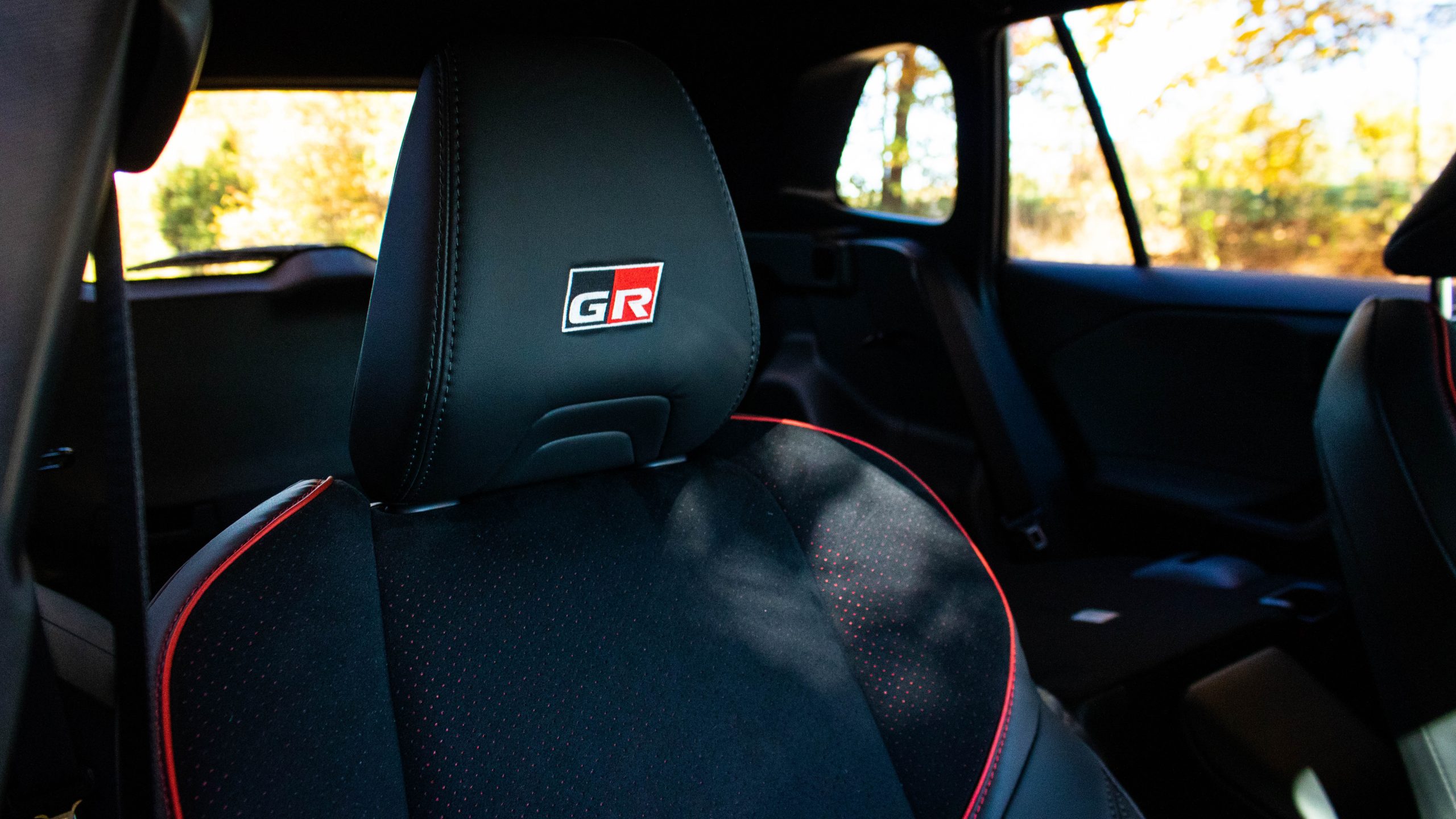 Photo credit: Thomas Hundal
Photo credit: Thomas Hundal
Of course, if you’re going to make a performance trim of a regular car, you’re gonna want to do something special with the interior. Unsurprisingly, the cabin of the Toyota RAV4 PHEV GR Sport shares a little DNA with the car you really want but can’t fit a rear-facing child seat into. The seats are clad in the same sort of Brin Naub suede you get in a well-specced GR Corolla, a solid percentage of the stitching is red, the pedals are aluminum, and you get GR badging on the headrests, door sills, and steering wheel. Tasteful. Unfortunately for tall people, the sides of the center console still aren’t padded, but knee clearance seems a bit better with the sport-look seats largely shared with the XSE and SE trims.
How Does It Drive?
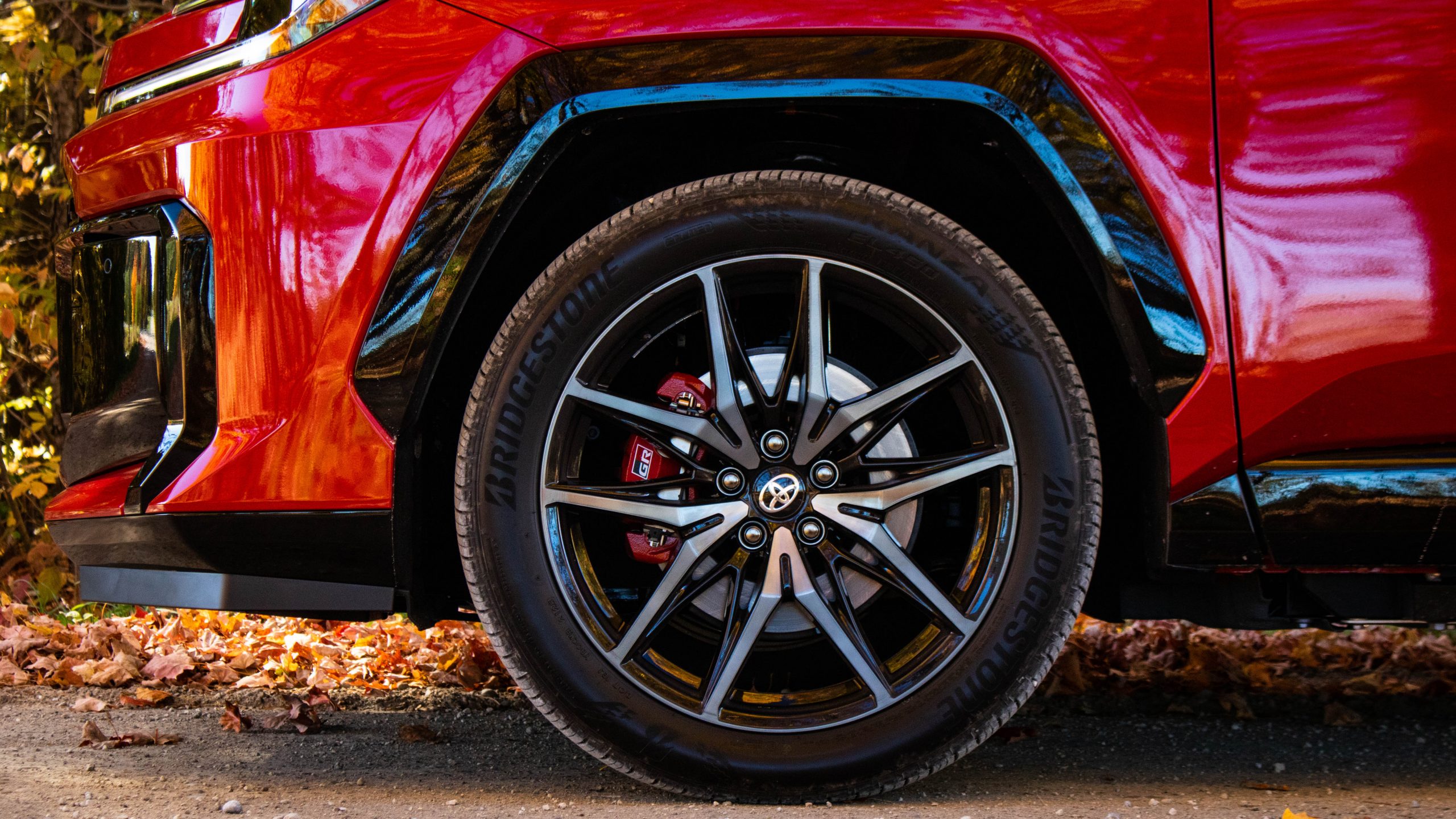 Photo credit: Thomas Hundal
Photo credit: Thomas Hundal
The RAV4 PHEV GR Sport isn’t just an appearance package, and the first clue is a set of arch extensions that widen this crossover by 25 mm to make way for a 20 mm wider track and 10 mm-wider tires. From there, the GR team decided to drop it like it’s … warm. Alright, six-tenths of an inch or 15 mm isn’t a huge measurement, but it’s nice to know that new springs and retuned dampers actually bring the RAV4 PHEV GR Sport closer to the ground while firming up the ride. Speaking of stiffening, Toyota’s also beefed up the rear crossmember and added a structural damper for extra rigidity up front, then capped it all off by recalibrating the electric power steering in sport mode. Sounds lovely, but how does it feel on the road?
In a word: Better. Compared to a standard RAV4, the body control’s tighter, the steering in Sport mode is weightier, and the whole vehicle just feels more planted, should you want to take corners a little bit quickly. You even get a more composed ride quality because the dampers seem better-matched to the springs than on the regular model. Alright, so it’s not going to trouble an Alfa Romeo Stelvio or BMW X3, but the GR Sport is a significant improvement on a regular RAV4 for those who care about driving but want the promise of economy, reliability, and resale value of a Toyota plug-in hybrid.
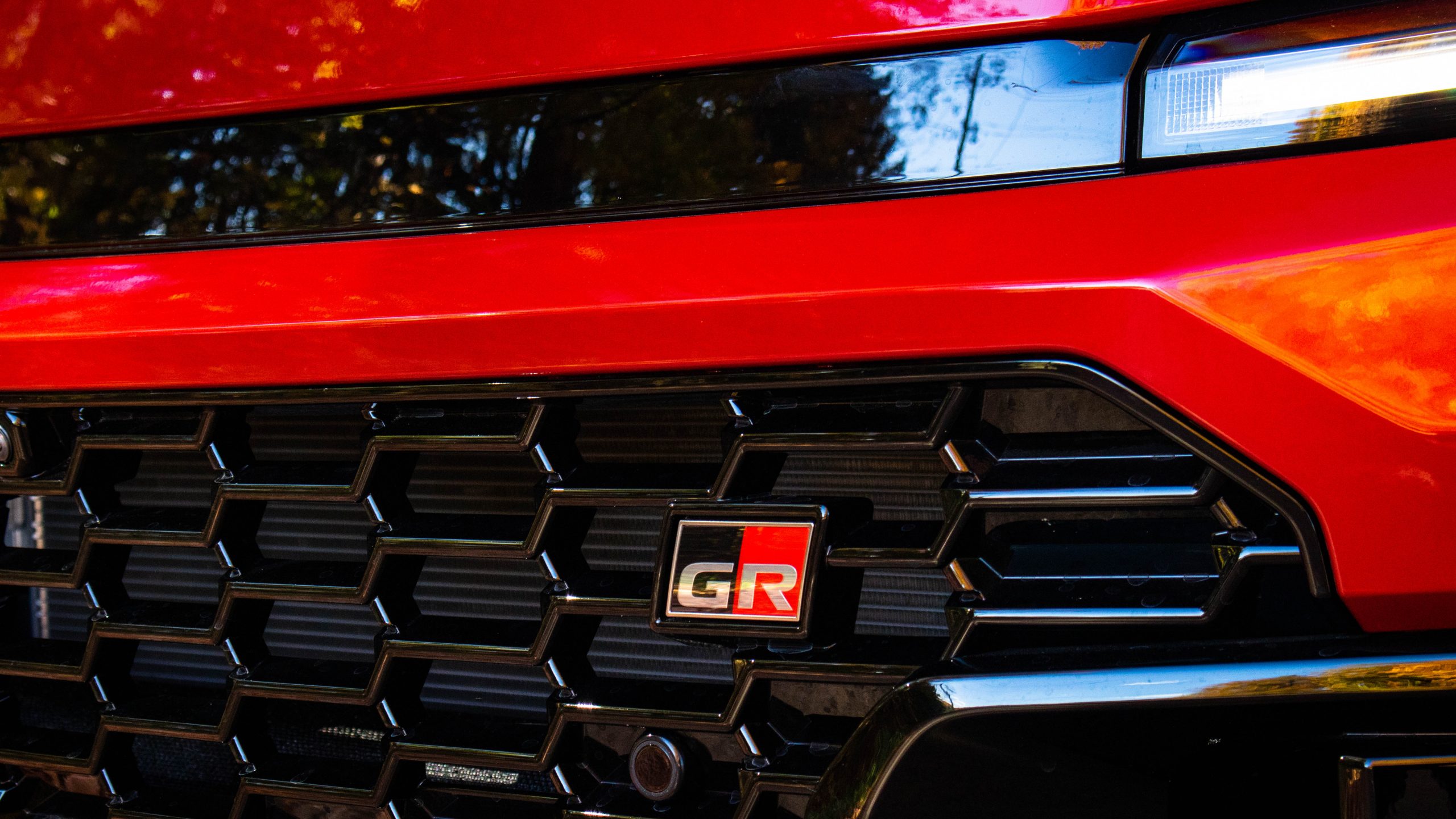 Photo credit: Thomas Hundal
Photo credit: Thomas Hundal
Oh, and did I mention that this thing’s quick? Sure, it weighs 4,400 pounds, but a combined output of 324 horsepower should make for a zero-to-60 mph time on the sweet side of six seconds once rollout is deducted. Of course, there is one caveat here: While the front drive motor produces a lot more juice than in the regular non-plug-in hybrid model, the rear electric motor makes the same 53.64 horsepower and 89 lb.-ft. of torque as it does on the regular RAV4. The result is even more of a front-biased feel, and while that should be fine for those buying a less sporty PHEV, I suspect an infinitesimally small number of people will buy a GR Sport by accident.
Does It Have The Electronic Crap I Want?
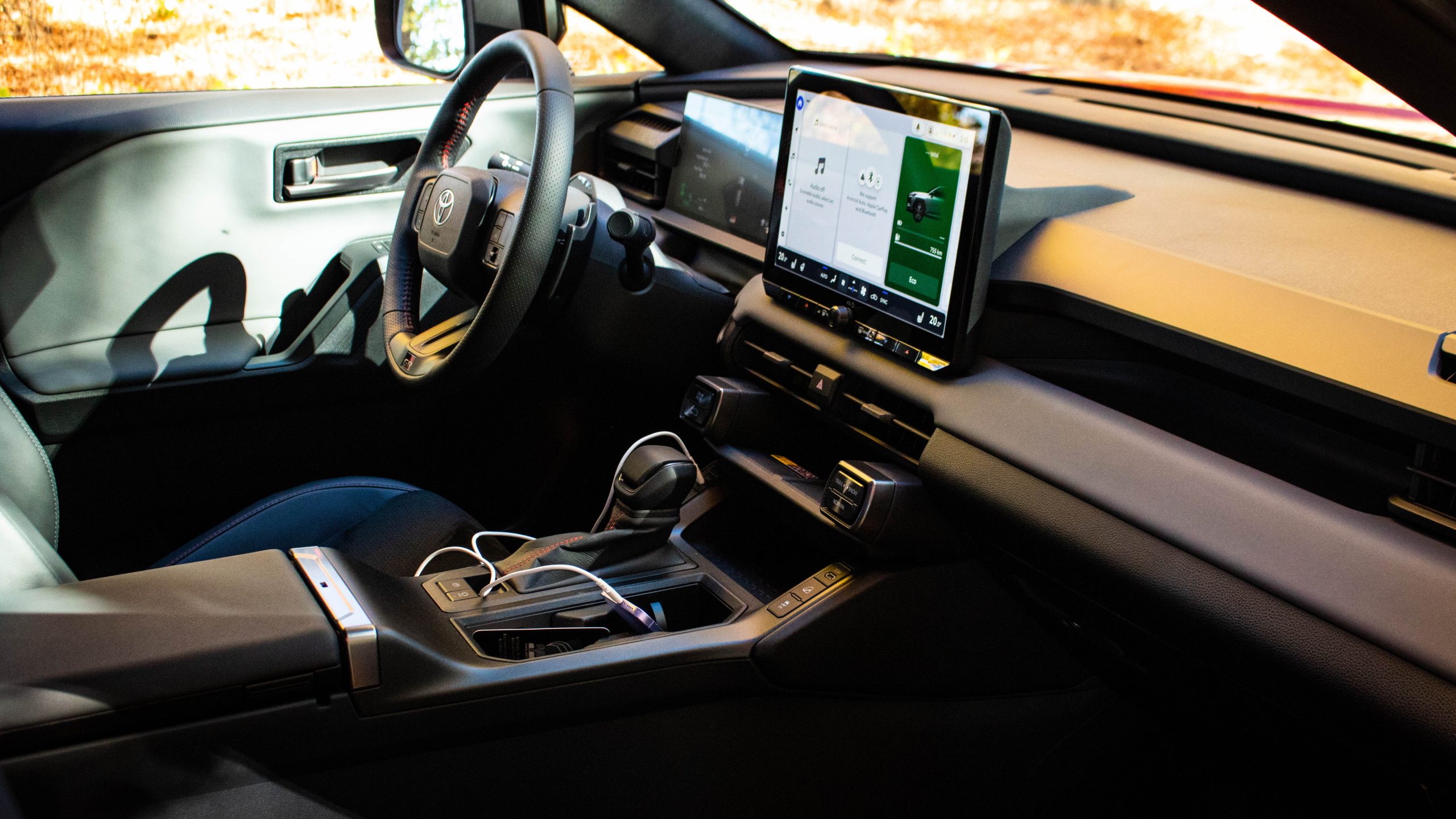 Photo credit: Thomas Hundal
Photo credit: Thomas Hundal
If you’ve read our road test of the standard RAV4, you probably already know the drill when it comes to in-cabin tech. For 2026, the best-selling vehicle in the world gets a 12.9-inch digital instrument cluster, up to five USB-C charging ports, a slick new infotainment system with 16 GB of RAM, and an updated safety suite including a built-in dashcam. What makes the GR Sport different from a base model in this department? Well, it gets a larger 12.9-inch infotainment touchscreen and a 360-degree camera system. So far, so good, but there’s one thing you might want that isn’t just electronic but also functional.
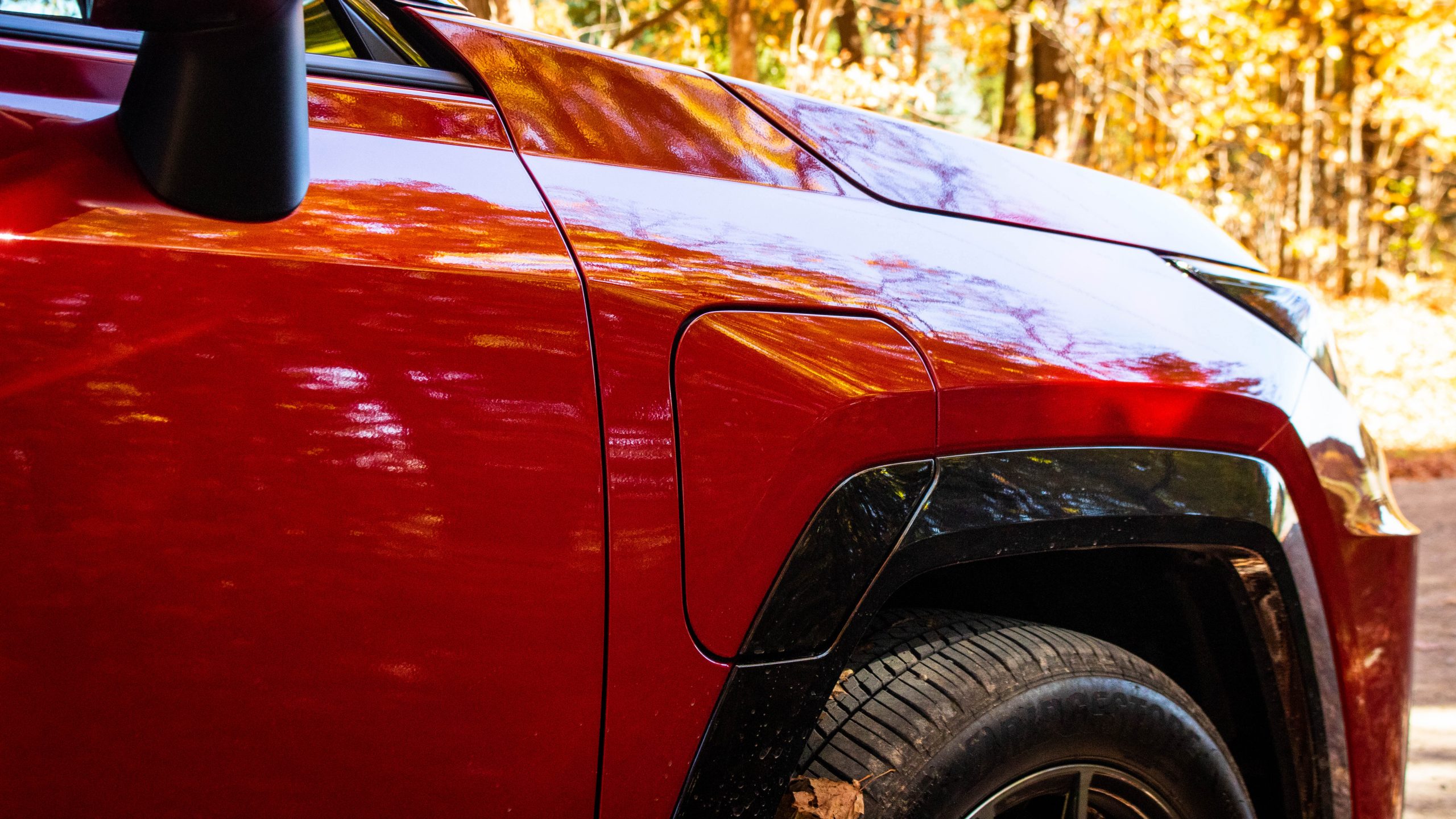 Photo credit: Thomas Hundal
Photo credit: Thomas Hundal
While top-trim RAV4 PHEVs gets DC fast charging and an 11 kW onboard AC charger, the GR Sport makes do with no DC fast charging and a mere seven-kilowatt onboard AC charger. Sure, this means it should only take an extra hour or so to go from 10 percent to 80 percent on a Level 2 charger than it would with an 11 kW onboard charger, but the RAV4 GR Sport is sort-of an enthusiast car, and plug-in enthusiasts care about charging. Then again, the absence of the top-spec charging package seems to be a way of managing costs. Toyota’s hinted that, at least in Canada, the RAV4 GR Sport won’t be the top-trim plug-in RAV4, which means there’s a shred of hope when it comes to reasonable affordability.
Three Things To Know About The 2026 Toyota RAV4 PHEV GR Sport
It gets some proper suspension tweaks over the standard model.
No DC fast charging on this trim.
It’s the best-driving new RAV4 of the bunch.
Does The 2026 Toyota RAV4 PHEV GR Sport Fulfil Its Purpose?
 Photo credit: Thomas Hundal
Photo credit: Thomas Hundal
Absolutely. It’s a better-looking, better-handling Toyota RAV4 for people who care about that sort of stuff, it pays more than just lip service to the GR sub-brand, and it’s even based on the high-output plug-in hybrid model. Although we’re still waiting on pricing, if Toyota keeps it reasonable, this will be the best RAV4 yet. Sure, the old three-doors are cool, but they don’t handle or move out nearly this well. Twenty years ago, we were spoiled for choice when it came to performance trims of family sedans. Time to do the same to mainstream crossovers.
What’s The Punctum Of The 2026 Toyota RAV4 PHEV GR Sport?
It’s actually grounded to the ground, yo.
Top graphic image: Thomas Hundal

